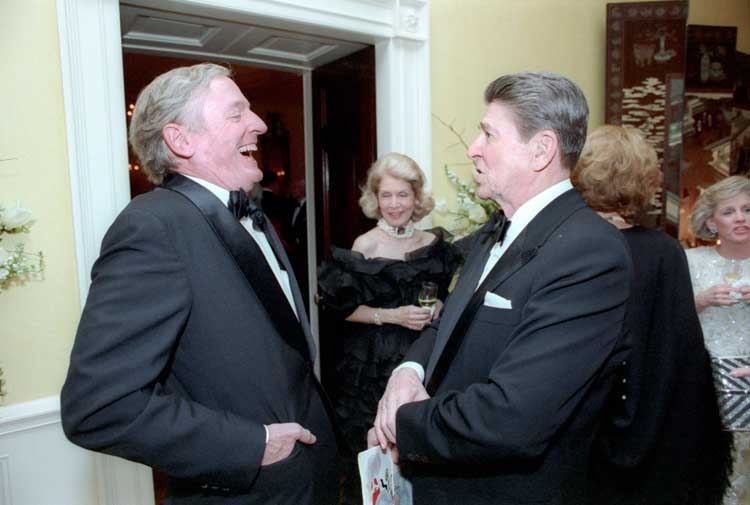Conservatism 101: A Beginner's Guide
A lot of people try to define political thought as items on a checklist. In reality, we all fall somewhere on a spectrum. There are, however, some values that clearly appeal to conservatives more than liberals. If you are curious about what they are, we have put together a beginner’s guide to conservatism.
For better or worse, politics are becoming a bigger part of many Americans’ lives. That is partially due to a 24-hour news cycle and exposure to social media commentary. Whatever the reason, it can be hard to escape debate. Maybe that means you are looking for something a little more tangible than the daily bickering. If you’re trying to figure out why conservatives believe what they do, we’d like to help. Conservative leaders have long advocated for the concepts we describe below. Regardless of which party or president is in power, our guide might help keep you grounded in tradition.
A Beginner’s Guide to Conservatism
First of all, let’s make it clear that we will be referring specifically to American conservatism. Though European conservatives might espouse some of the same beliefs, the U.S. is very different. For example, conservatives in much of Europe have fought to preserve the monarchy. American conservatives have also shed several other ideals from their European counterparts. Among them are support for a nationally established church and social classes based on heredity.
Now that we’ve identified what American conservatism is not, let’s try to determine what brings the ideology together. We can frequently identify rifts within any political group. But some beliefs stand the test of time. Many conservative thought leaders have tried to offer a working definition. Some have sought to provide a brief, simple description of the ideology. These often fall short of fully explaining the details of conservatism, though.
Then there are the academics who seek to dive deep into each facet of the belief system. While great for reference, such essays tend to be dry and hard to digest. We will try to split the difference with an informative, yet engaging look at a political philosophy. A beginner’s guide to conservatism seeks to give you the tools to accurately define what millions of Americans believe.
Conservatism 101: Understanding the Basics
Countless conservatives — and more than a few liberals — have offered their own unique takes. Through it all, though, a few key points keep coming up. Some deal with issues including law enforcement and social class. Others focus more on issue of morality and faith. Taking a broad overview of these principles, here are what we consider the key tenets of American conservatism.
Natural Law
Conservatives tend to believe the government is not the author of our laws. Instead, they cite “natural law.” This is a guiding set of principles that go beyond borders and cultures. As the Declaration of Independence states, the founders believed some truths to be “self-evident.” This is a prime example of the belief in natural law. It is also one of the first examples of American conservatism in founding documents.
You can find variations of this theme all through history. Many of the greatest thinkers of all time offered such observations. This has resulted in a variety of definitions but the same idea of one supreme set of guiding principles. Supporters of this philosophy have also disagreed about how to enforce natural law. Some think it comes directly from God. Others believe it should be rooted in civic responsibility. In almost all cases, the goal is creating a safe and, at least to some extent, enjoyable life for all citizens. Of course, conservatives typically argue that such a society is impossible to achieve in an imperfect world. Slavery was the most glaring example in American history. But all societies fall short of enforcing natural law. Conservatives tend to favor protecting the concepts of natural law while recognizing their real-world shortcomings.
Private Property
One key trait that defined conservatism long before America was founded is a belief in the right of individuals to own property. They have long argued it goes hand in hand with individual liberty. In fact, English thinker John Locke included this in his trinity of natural rights. He wrote of “life, liberty and property” in the 17th century. Those concepts were altered slightly for a starring role in the Declaration of Independence decades later. That document lists those rights as “life, liberty and the pursuit of happiness.”
But you don’t have to look far to see the importance of private property in the formation of the United States. And it was especially important in creating the American conservative movement. A beginner’s guide to conservatism will certainly include quotes from founding fathers like John Adams. He argued that property ownership should be “as sacred as the law of God.” If not, he argued that “anarchy and tyranny commence.”
Tradition over Change
This might be the truest definition of conservatism. As evident in its root word, they seek to conserve time-honored tradition in most cases. Change will always be with us, of course. Conservatives, however, tend to reject efforts to upend tradition without due cause. They often believe attempts to change established order are based on impulse.
Whether religious, legal or cultural, conservatives typically believe traditions exist for a reason. And without due cause to uproot that tradition, they are probably going to argue for the status quo. Conservative leaders have pointed to the time-tested quality of these institution and practices in defending them. But even some on the right recognize that this tendency can go too far. Writer P.J. O’Rorke said that in its “worse forms, conservatism is a matter of ‘I hate strangers and anything that’s different.'” He went on, though, to describe its “better forms.” He said conservatives favor “a long series of trial-and-error experiments by millions of human beings” in backing tradition.
Individual Freedom
If there is one key to understanding American conservatism, it is probably this one. But since conservatives have historically promoted freedom of thought, it is also a big reason many people misunderstand it. Restrictive ideologies require you stick to specific principles. Therefore, they are easier to define. Conservatism, on the other hand, means different things to different people at different times.
The concept of individual freedom is broad and covers each of the themes above. On the libertarian side of the spectrum, conservatives believe individuals should have few constraints on thought or behavior. They typically want that freedom to end only when it begins to encroach on another person’s freedom. That is where this debate has become more complicated as American culture becomes more diverse. Social justice activists often want to limit the expression of individuals when it offends or marginalizes others. The debate about where a government should step in to override that liberty will continue. But you can count on conservatives to congregate on the side of individual freedom.

How It Has Changed Through the Years
The core tenets are pretty constant. The way it plays out in America, however, has changed throughout the country’s history. Particularly over the past century, it has made its mark in a variety of ways. Whether from the majority through new laws or as opposition from the minority, conservatives have maintained a voice in American politics. As part of a beginner’s guide to conservatism, we have isolated a few key periods from the past 100 years.
- Backlash Against the New Deal – Many liberals have celebrated former President Franklin Roosevelt for his response to the Great Depression. At the time and in the decades since, however, conservatives maintained his policies actually made things worse. The American Liberty League was formed by conservative Democrats at the time who opposed the leftist platform.
- The Rise of Conservative Thinkers – The late 1940s saw a spike in fame among conservative thinkers. The magazine “Human Events” began publication in 1944. Several political magazines followed suit in later years. Libertarian strains also began to flourish within the larger conservative movement. Economists like Ludig von Mises established and popularized Austrian economics in the U.S. Basically, the school of thought discourages government interference in economic matters. And author Ayn Rand disseminated her libertarian take during this period, too.
- Anti-Communism – As communism spread across Europe after World War II, conservatives saw it as a real threat to American democracy. Politicians and pundits on the right spoke out against its impact. Many believed there was a communist effort to infiltrate American institutions.
- Goldwater and Reagan – The last half of the 20th century saw the rise of two elected officials who helped refine the American conservative movement. The policies of U.S. Sen. Barry Goldwater and President Ronald Reagan are routinely cited by modern conservatives.
How They Define Themselves

So far, we have tried to define conservatism on a large scale. It might be more helpful to hear what the movement’s leaders had to say about their beliefs. A beginner’s guide to conservatism is best written in their words. These are the men and women who helped shape the ideology. They include the Founding Fathers to radio hosts and other commentators of today. These leaders have always made their case with conviction. Here are a few ways they described what it means.
In his 1951 book “The Case for Conservatism,” political thinker Francis Wilson offered his definition. He said it was when “certain lasting values are defended within the framework of the tension of political conflict.”
Ronald Reagan thought the very term “conservative” was misleading. “If you analyze it I believe the very heart and soul of conservatism is libertarianism,” he said.
Talk show host Mark Levin called it “the antidote to tyranny.” He went on to say it is “based on thousands of years of human experience.” Levin called it a “magnificent” and “liberating” way of looking at the world “for all times.”
Truth and Accuracy
We are committed to truth and accuracy in all of our journalism. Read our editorial standards.
Advertise with The Western Journal and reach millions of highly engaged readers, while supporting our work. Advertise Today.










